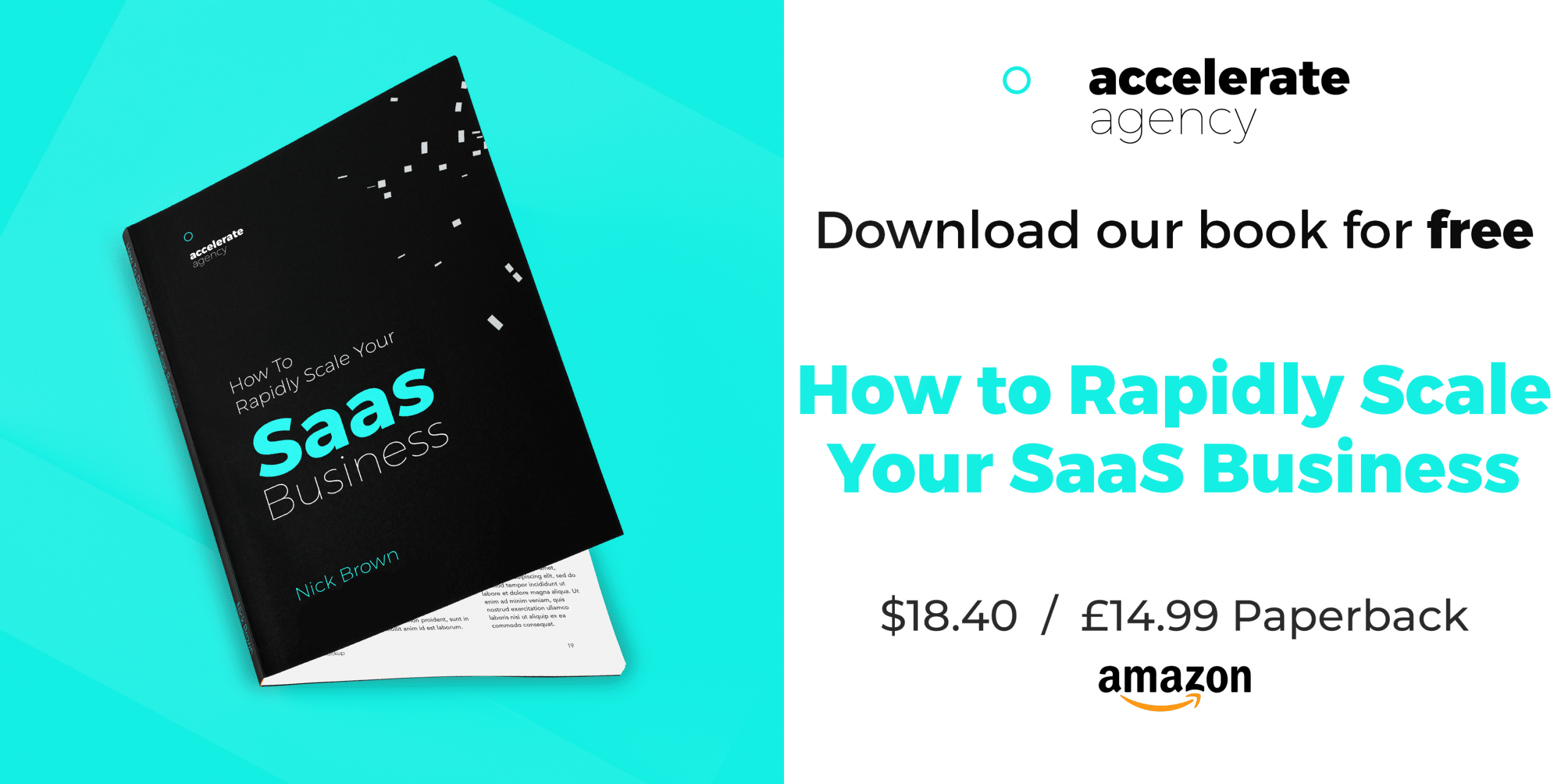10 Essential SaaS Metrics Every Marketer Needs to Know
Every business is shooting for sustainable growth. Growing your customer base, turnover, and profits in manageable fashion is the key to long-term success. The only way to get that kind of growth is if you fully understand your own company. You must know where you stand and where you need to get to in the future. You must know your current customers and your leads inside out.
The only way to have such a firm grasp on your business is by collecting and assessing data. You must track and analyse all those things that make your company and its customers tick. That’s why data analytics platforms like Google Analytics are so crucial to modern firms. Those platforms let a company get to grips with the metrics that tell them how they’re performing.
For SaaS companies, though, the most critical metrics differ. The SaaS business model is unique. You and your staff need to take a different view of your company and your customers. Read on, and you’ll learn the essential SaaS metrics that you must track if you’re going to succeed.
Book a Consultation
What Makes SaaS Different?
In most business models, the majority of revenue comes at the time of purchase. A firm acquires customers, sells them their product or service, and takes their money. The SaaS model is demonstrably different. The revenue SaaS companies get for their services comes over an elongated period of time.
That period is called the customer lifetime. The longer a customer lifetime your SaaS firm can foster, the more revenue you get. If a customer abandons your service earlier, you stop getting their money.
For any SaaS business, then, customer retention is vital. You must work to make every customer lifetime as long as possible. That’s on top of other practical considerations, like profit margins or marketing decisions.
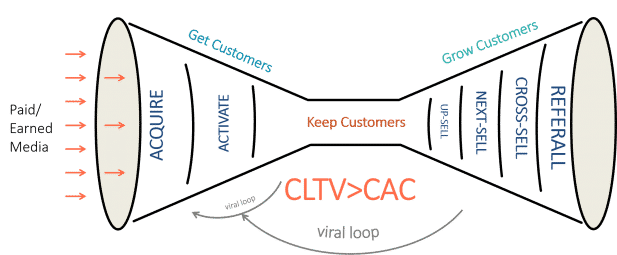
Source: Lean Case
The SaaS model, therefore, has three primary components:
- Acquiring customers
- Retaining customers
- Monetising customers (getting upsells and repeat sign-ups)
Traditional business metrics don’t account for the traits of the SaaS model. They don’t offer the insights needed to optimise those three components of your business. That’s why there are specific SaaS metrics to aid those companies.
Understanding and tracking those metrics is what will bring the sustainable growth you crave. Before you can assess the metrics and derive vital insights from them, you must know what they are. The following is a brief guide to essential SaaS metrics.
The SaaS Metrics You Need to Understand
When your firm invests in marketing your SaaS product, you’re trying to generate future growth. You’re not only aiming at a one-off retail sale. As such, to make your promotional efforts effective, you need to grasp particular metrics.
Those metrics must tell you about customer retention, value, and happiness. They can’t only deal with acquisition. The ten measures below are vital to understanding all those aspects of your relationship with customers.
Customer Churn
Customer churn is the most important metric for SaaS businesses. It measures the number of customers abandoning your service over time. A customer churn rate, for instance, is often expressed as several customers per month or year.
No business can entirely avoid customer churn. Some people who sign up will let their subscription lapse at the end of its term. Other customers will decide to leave your company earlier. To grow your business fast, you need to keep customer churn as low as possible.

Source: Medium
As your firm relies on steady, ongoing revenue from customers, high churn can hurt the bottom line. The first step to reducing customer churn is tracking and logging your current rate.
Once you’ve got data on your business’s customer churn, you can start digging deeper. Look at whether the customers who’ve abandoned your service have anything in common. That can highlight any specific issues that are making your product less appealing to those people.
Monthly Recurring Revenue (MRR)
The success of any SaaS business gets determined by the stream of revenue it has coming in. Growing a company is about sustaining and supplementing that stream. Monthly Recurring Revenue (MRR) is a metric that helps you track your success at doing just that.
Your MRR reports how much revenue your customers generate per month. Achieving high MRR is how SaaS firms stay profitable. By continually offering value to your customers, they keep paying you month on month. You can then acquire new customers and look to keep your MRR tracking upwards.
Keeping a close eye on your MRR is vital for a few reasons. Firstly, it can combine with your customer churn data to identify issues quickly. If your MRR starts falling, you know that something’s going wrong.
Secondly, MRR also helps you find the ideal price point for sustainable growth. If you’ve undervalued your service, your MRR won’t increase enough, even if you’re acquiring new customers.
Customer Lifetime Value (CLTV)
Customer Lifetime Value (CLTV) is the average amount one customer is worth to your business. CLTV helps you judge the acquisition cost of new customers or the impact of losing existing ones.
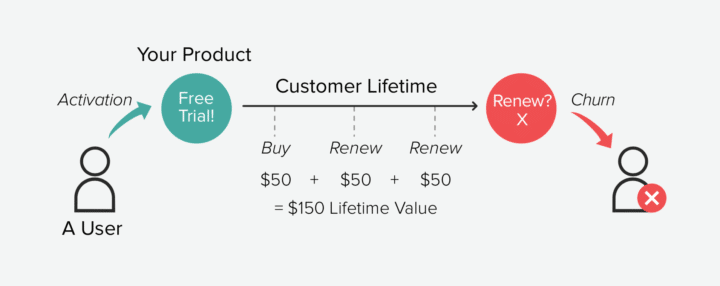
Source: Chartmogul
Working out CLTV is easy:
- Find your average monthly revenue per account. You can find this by dividing your MRR by the total number of customers
- Multiply the average monthly revenue by the average number of months customers that stay with you
CLTV is useful for quantifying the worth of a new customer. It tells you just how much revenue you can expect to recoup long-term for each new client you bring on board. That can help you better assess the ROI of SEO, PPC advertising, or other marketing efforts.
Customer Acquisition Cost (CAC)
Customer Acquisition Cost (CAC) is a SaaS metric that goes hand in hand with CLTV. It shows how much it costs your business to acquire a new customer. Expenses in that regard include salaries to sales staff, advertising costs, and all else besides.
To calculate your CAC, you need to work out that total expense in a given time. It’s often easiest to choose a month. You add up the full extent of your spending on marketing, promotion, and onboarding.
Then, divide that figure by the number of new customers you acquired in the same period. That gives you a measure of how much it costs for you to attract each new customer. You’ll then want to compare this figure with the CLTV you calculated earlier, but we’ll get to that later.
Months to Recover CAC
We’ve already talked about how crucial customer retention is to the SaaS business model. Months to recover CAC is a SaaS metric that provides the data to support that assertion. It displays how long it takes after acquiring a customer before you recoup your costs.
In other words, this metric tells you how long you need to keep a customer until you start making a profit. As you grow your business, you’ll want to work to drive the number of months to recover CAC as low as possible.
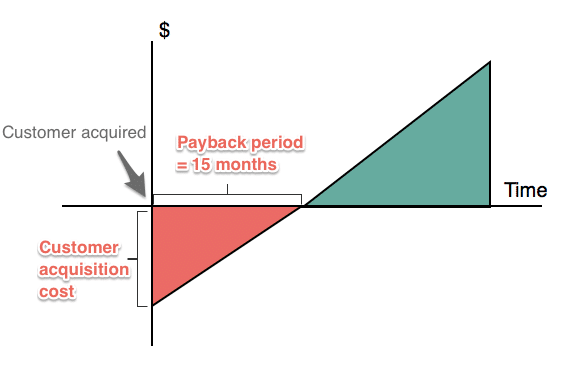
Source: Profitwell
There’s a straightforward equation to figure out the months to recover CAC metric:
CAC / MRR x GM
In that equation, GM stands for gross margin. That’s the profit you make after subtracting sales costs from your total revenue.
CLTV-to-CAC Ratio
When you’ve got to grips with both CLTV and CAC, you can combine them to create a new metric. Your CLTV-to-CAC ratio is another crucial measure of the health of your business. It tells you if you’ve got the right ingredients in place for sustainable, long-term growth.
There’s no complicated calculation for the CLTV-to-CAC ratio. You compare the two figures in question. If they’re of the same value, the ratio is 1:1. If the CLTV is ten times the value of the CAC, the ratio is 10:1.
A thriving SaaS business should have a CLTV-to-CAC ratio of 3:1 or higher. If your figure is lower, you’re spending too much on acquisition compared to what each customer is worth. It costs you more to bring a new customer on board than you’ll ever earn from their custom. You need to either reduce acquisition costs or raise the price of your product.
Expansion Revenue
Expansion revenue is the first of our SaaS metrics that deals with the third component of the SaaS business model. To refresh your memory, that was the ‘monetising customers’ component. Expansion revenue is a measure of any increase in MMR achieved via upselling or customers upgrading to more expensive plans.
Achieving a high expansion revenue is beneficial for any business. It’s particularly useful for a firm with a comparatively high customer churn rate. That’s because your expansion revenue helps to offset the drop in MMR caused by high churn.
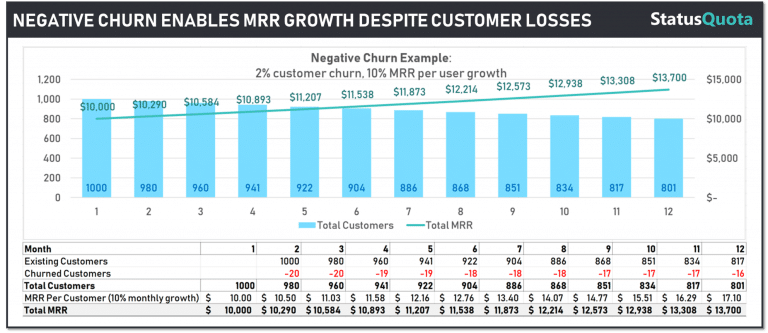
Source: Open View Partners
It’s possible to achieve a negative effective churn rate via expansion revenue. That’s the name given to when a firm’s expansion revenue is worth more than the negative impact on MMR of customer churn.
Net Promoter Score (NPS)
This is another SaaS metric that’s useful due to its possible impact on customer retention. A net promoter score (NPS) is a value you can generate to assess the happiness of your customers.
All you need do to create this measure of customer happiness is to give your customers a one-question survey. You ask the customers to rate from 1-10 how likely they are to recommend your product to others. You can then take an average of those ratings to create your NPS.
The higher the score, the more satisfied your customers are. The lower the score, the less they think of you and your product. If you get a low NPS, it can point to potential customer retention problems. By identifying those issues, you can nip them in the bud before they take root.
Qualified Marketing Traffic
Any business with an online presence should be using Google Analytics and related tools. Those platforms are excellent at helping track website traffic from different marketing channels. As a SaaS business, though, you need to take things one step further.
Due to the nature of your business, existing customers probably visit your site a lot. They might have to return to your pages every time they want to log in to your service. As you get more customers, your pages will get more traffic. That traffic isn’t reflective of the success of your marketing efforts.
You need to segment your site visitors. You must separate returning customers from other leads or prospects. The latter is what’s known as qualified marketing traffic. It’s this traffic that you want to track. Many analytics platforms and even in-app analytics options give you ways of doing so.
Lead-to-Customer Rate
Our final SaaS metric to track is your website’s lead-to-customer rate. This is the rate at which leads to your site convert into real customers. It’s a critical metric. It reports on the success of your sales processes and lead-nurturing activities.
Like many of the metrics on this list, the lead-to-customer rate is easy to calculate. All you do is divide your total number of new customers by your total number of leads in a particular period. Then, you multiply that figure by 100.
For example, you may have had 500 leads in a month and got five new customers during the same period. Your lead-to-customer rate, in that case, would be 1% (5/500 x 100). The higher your lead-to-customer rate, the better you’re converting your leads.
Master The Metrics to Help Your Business Grow
As the owner of a SaaS business, you have lots of crucial decisions to make. You need to find the right path forward for your company. You must optimise your product, pricing, and promotion perfectly to achieve success. Data-driven insights into your business and its customers can help you find the right way to go.
The most pertinent metrics to inform your choices are not the same as those other types that businesses lean on. The unique nature of the SaaS business model means you must learn different things about your customers and your site. The ten SaaS metrics featured here are crucial measures of your firm’s performance. Get to grips with them, and success could be just around the corner.
